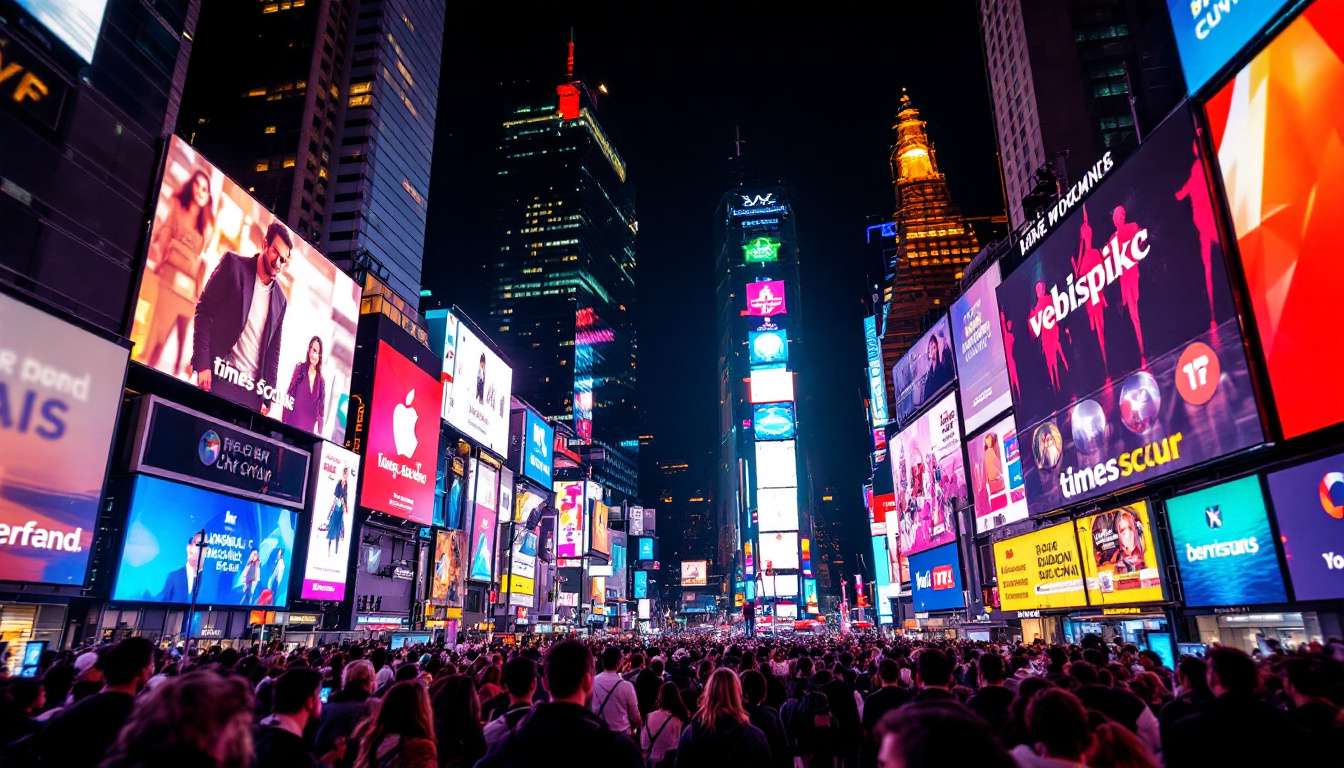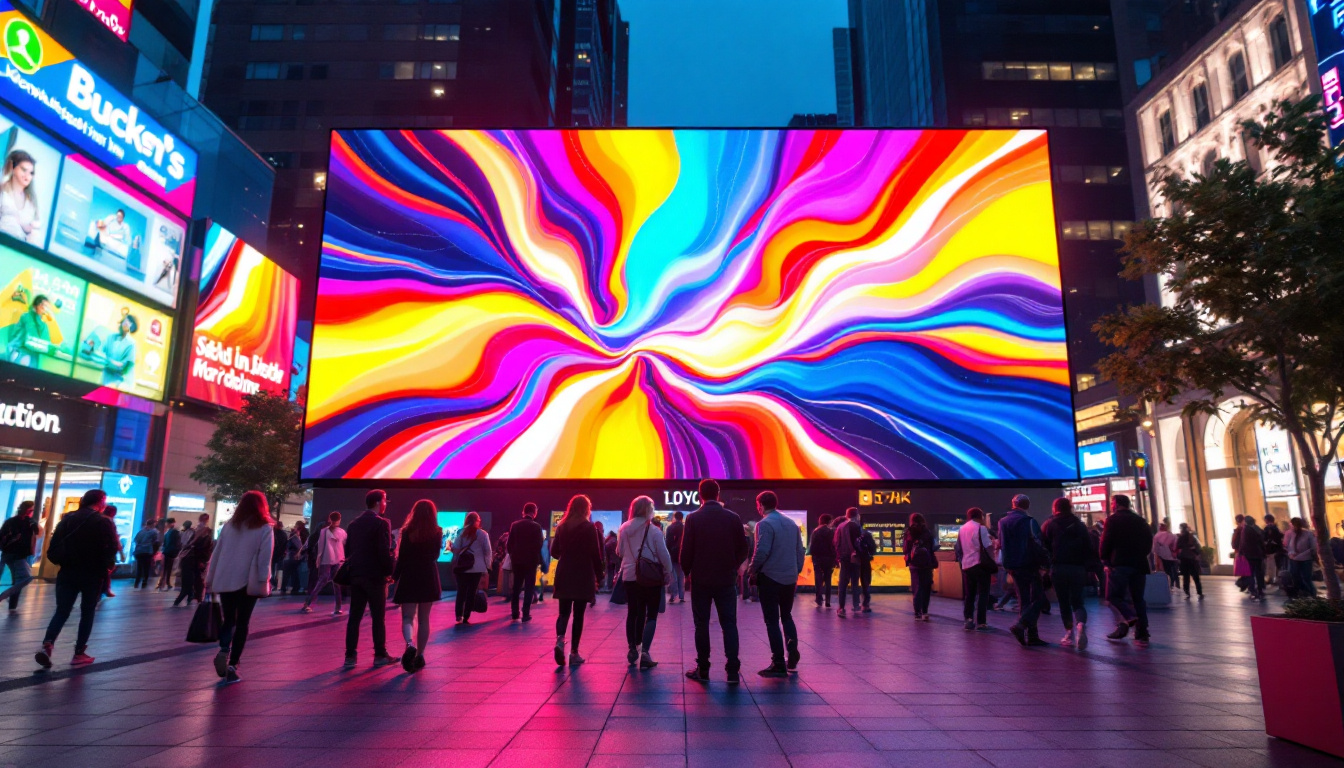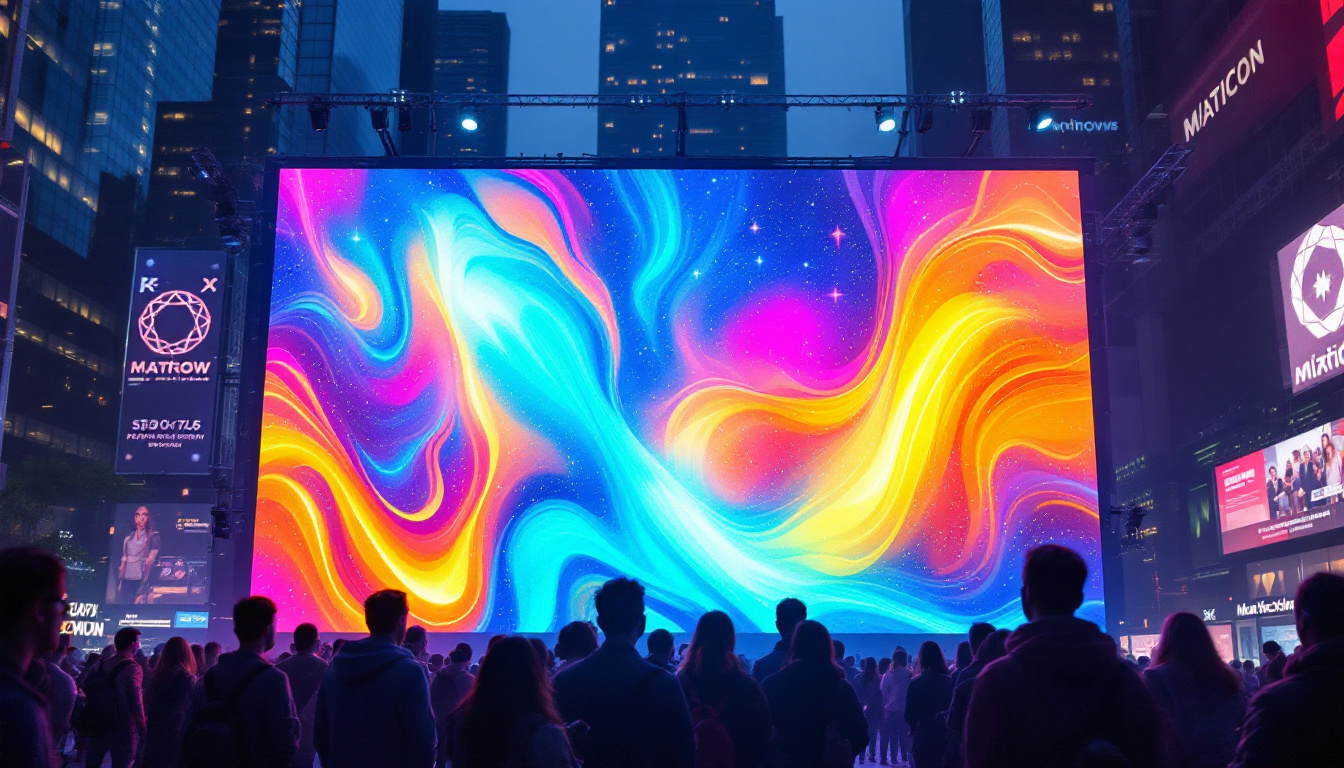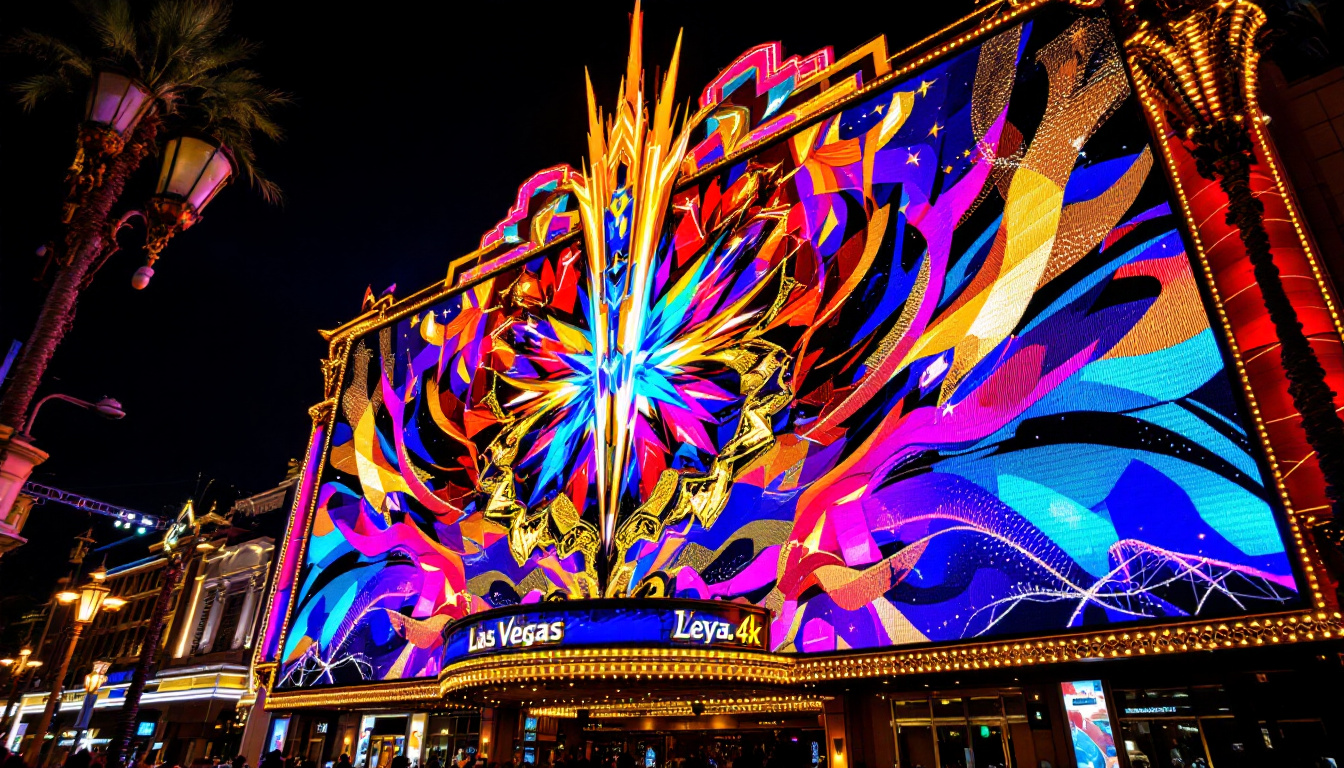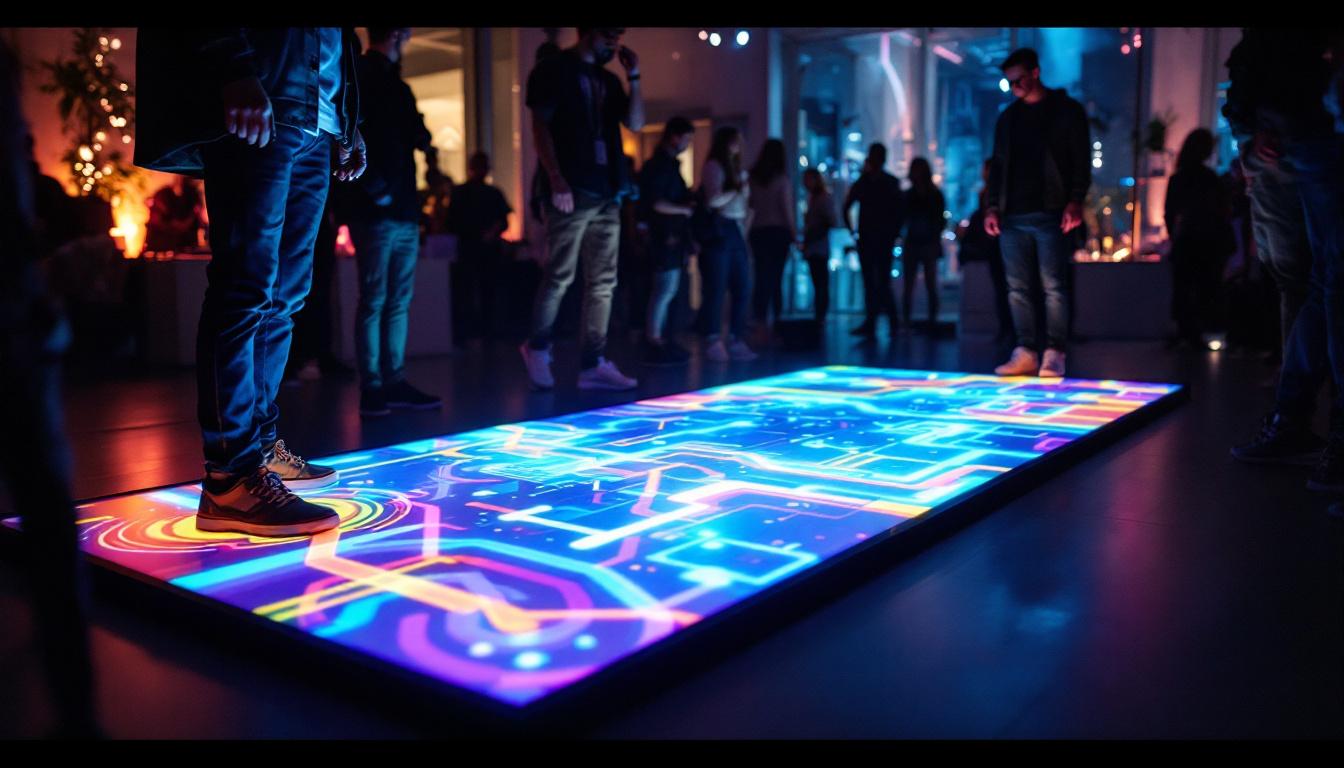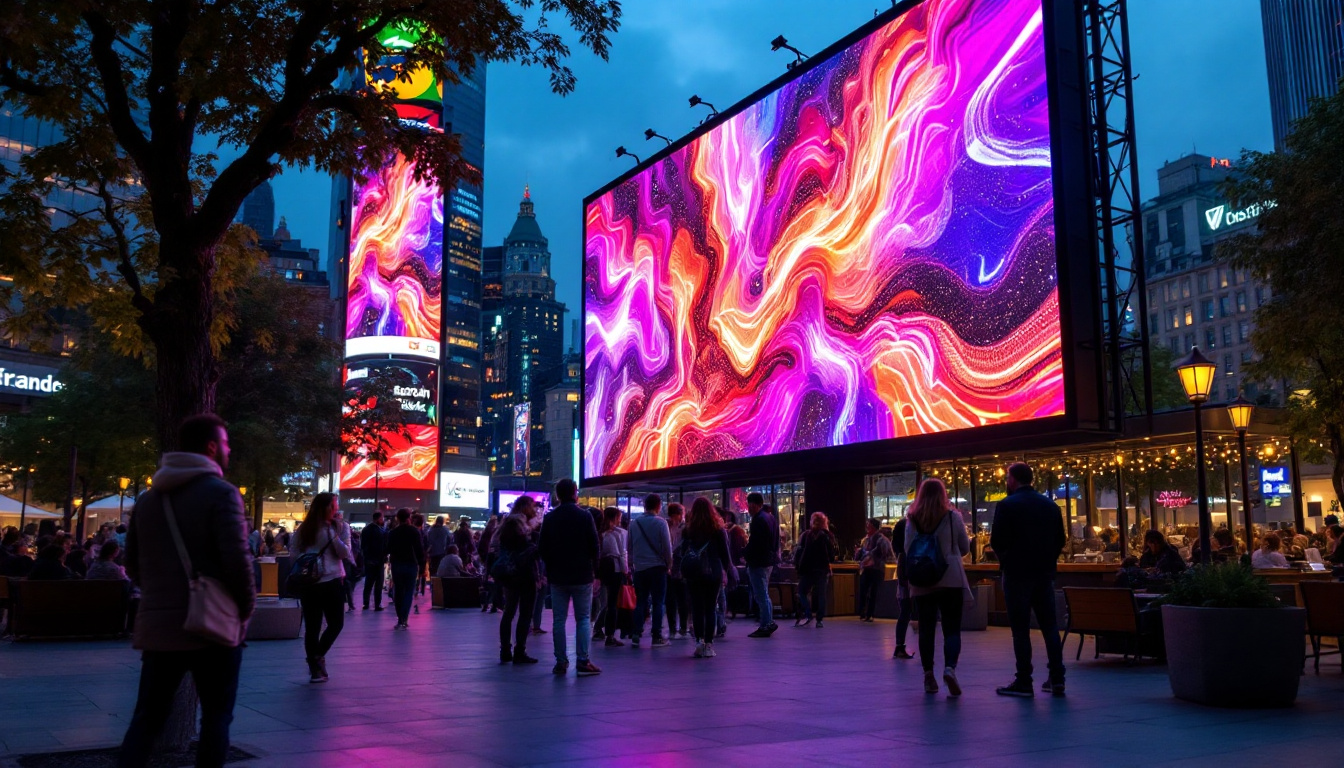In the fast-paced environment of airports, effective communication is paramount. One of the most significant advancements in this area has been the introduction of LED displays. These digital displays have transformed how information is conveyed to passengers, enhancing their travel experience while ensuring that critical data is communicated swiftly and clearly.
Understanding LED Technology
Light Emitting Diodes (LEDs) are semiconductor devices that emit light when an electric current passes through them. This technology has revolutionized various industries, including advertising, automotive, and, notably, transportation. In airports, LED displays serve multiple purposes, from flight information to advertisements, all while providing superior visibility and energy efficiency.
How LED Displays Work
LED displays consist of numerous tiny light-emitting diodes arranged in a grid. These diodes can produce a wide range of colors by varying the intensity of red, green, and blue lights. When combined, they create vibrant images and text that can be viewed from great distances. The technology allows for both static and dynamic content, making it versatile for various applications. Furthermore, the rapid response time of LEDs means that information can be updated in real-time, which is particularly beneficial in fast-paced environments like airports where timely communication is essential.
Benefits of LED Displays in Airports
LED displays offer several advantages over traditional display technologies. First and foremost, their brightness and clarity make them ideal for environments with high ambient light, such as airports. Additionally, LED displays are energy-efficient, consuming less power than older technologies, which is crucial for large installations. This energy efficiency not only contributes to lower operational costs but also aligns with sustainability goals that many airports are adopting to reduce their carbon footprints.
Moreover, the durability of LED technology means that these displays can withstand the rigors of constant use and exposure to environmental factors, reducing maintenance costs and downtime. The lifespan of LED displays is significantly longer than that of traditional bulbs, often exceeding 50,000 hours, which translates to years of reliable service. This longevity, combined with their low heat emission, further minimizes the risk of overheating and failure, ensuring that critical information is always available to travelers. Additionally, the ability to integrate smart technology into LED displays allows for enhanced interactivity, such as touchscreens for wayfinding or real-time updates on flight statuses, creating a more engaging and informative experience for passengers.
Applications of LED Displays in Airports
LED displays serve a multitude of functions within airports, enhancing the overall passenger experience. Their applications range from displaying flight information to providing advertising opportunities for businesses.
Flight Information Displays
One of the primary uses of LED displays in airports is to provide real-time flight information. These displays show critical data such as flight arrivals, departures, delays, and gate changes. The dynamic nature of LED technology allows for instant updates, ensuring that passengers receive the most accurate information possible.
Furthermore, the use of large LED screens in terminal areas helps to minimize confusion among travelers, as the information is presented clearly and prominently. This is particularly important during peak travel times when the volume of passengers can lead to increased stress and uncertainty. Additionally, many airports are now integrating multilingual support into their LED displays, catering to international travelers and ensuring that language barriers do not hinder the flow of information. This thoughtful approach not only enhances passenger comfort but also fosters a more inclusive environment.
Advertising and Promotions
Airports are prime locations for advertising, given the high foot traffic and diverse audience. LED displays provide an effective medium for advertisers to reach potential customers. With the ability to display vibrant images and videos, these screens can capture the attention of travelers and convey messages quickly.
Moreover, the flexibility of LED technology allows for targeted advertising based on flight schedules, passenger demographics, and even time of day. This capability makes advertising in airports not only effective but also efficient, maximizing the return on investment for businesses. In recent years, some airports have begun experimenting with programmatic advertising, where digital ads can be dynamically adjusted in real-time based on passenger behavior and preferences. This innovative approach ensures that the content remains relevant and engaging, ultimately enhancing the overall airport experience for travelers.
Wayfinding and Information Displays
In addition to flight information and advertising, LED displays play a crucial role in wayfinding within airports. Large, strategically placed screens can guide passengers to check-in counters, security checkpoints, and boarding gates. This is particularly beneficial in larger airports where navigating through multiple terminals can be daunting.
By incorporating interactive elements, such as touchscreens or QR codes, airports can further enhance the user experience, allowing passengers to access additional information or services at their fingertips. Furthermore, some airports are integrating augmented reality (AR) features into their wayfinding displays, enabling travelers to visualize their route through the terminal in a more engaging manner. This technology not only aids in navigation but also adds an element of fun to the travel experience, making the journey through the airport more enjoyable. As airports continue to evolve, the role of LED displays in providing seamless and efficient travel experiences will undoubtedly expand, paving the way for even more innovative applications in the future.
Design Considerations for LED Displays
When implementing LED displays in airports, several design considerations must be taken into account to ensure effectiveness and usability. The layout, size, and placement of these displays can significantly impact their functionality and the overall passenger experience.
Optimal Placement
Strategic placement of LED displays is essential for maximizing visibility and accessibility. Displays should be positioned at eye level and in high-traffic areas to ensure that they capture the attention of passengers. Additionally, placing multiple displays throughout the airport can help distribute information evenly and reduce congestion around any single display.
Moreover, the placement should consider the flow of passenger traffic. Displays that are positioned in line with the natural movement of travelers can enhance visibility and ensure that information is easily accessible when needed. This can also include the integration of displays near key decision points, such as security checkpoints and boarding gates, where travelers are likely to pause and seek information. Furthermore, utilizing digital signage that can adapt to real-time conditions, such as flight delays or gate changes, can provide a more responsive and user-friendly experience.
Size and Resolution
The size and resolution of LED displays are critical factors in their effectiveness. Larger displays can convey more information and are more visible from a distance, making them ideal for flight information. However, it is essential to balance size with resolution; a high-resolution display ensures that text and images remain clear and legible, even from afar.
Additionally, considering the viewing angles is crucial. Displays should be designed to be viewed from various angles, accommodating passengers who may be standing or walking past. This is particularly important in busy terminals where passengers may not always be directly in front of the display. The use of high-brightness LED technology can also enhance visibility in brightly lit environments, ensuring that information remains clear regardless of ambient light conditions. Furthermore, incorporating interactive elements, such as touchscreens or QR codes, can engage passengers more effectively, allowing them to access additional information or services directly from the display.
Challenges and Solutions
While LED displays offer numerous benefits, they are not without challenges. Addressing these challenges is essential for maximizing the effectiveness of digital displays in airports.
Technical Issues
One of the significant challenges associated with LED displays is the potential for technical issues, such as pixel failures or software malfunctions. These problems can disrupt the flow of information and lead to confusion among passengers.
To mitigate this risk, airports should invest in high-quality displays and implement regular maintenance schedules. Additionally, having a dedicated technical support team on-site can ensure that any issues are resolved quickly, minimizing downtime.
Content Management
Another challenge lies in managing the content displayed on LED screens. With the need for real-time updates, airports must have a robust content management system in place. This system should allow for seamless updates and ensure that information is accurate and timely.
Training staff to use the content management system effectively is also crucial. By empowering employees with the knowledge and tools they need, airports can ensure that their displays are always up-to-date and relevant.
The Future of LED Displays in Airports
The evolution of LED technology continues to shape the future of airport displays. As advancements are made, airports can expect to see even more innovative applications of LED technology.
Integration with Smart Technology
One of the most exciting developments is the integration of LED displays with smart technology. This could include features such as real-time data analytics, which can provide insights into passenger behavior and preferences. Such data can help airports optimize their services and improve the overall passenger experience.
Additionally, the incorporation of artificial intelligence (AI) could allow for more personalized content delivery. For instance, displays could show relevant advertisements based on the flight information or demographics of the passengers nearby.
Sustainability and Energy Efficiency
As the world becomes more environmentally conscious, the focus on sustainability in airport operations is increasing. LED displays are already known for their energy efficiency, but future advancements may lead to even more sustainable options. This could include solar-powered displays or those made from recyclable materials.
Airports that prioritize sustainability not only contribute to environmental conservation but also enhance their brand image, appealing to eco-conscious travelers.
Conclusion
LED displays have become an integral part of the airport experience, providing essential information and enhancing communication. Their versatility, energy efficiency, and ability to deliver real-time updates make them invaluable in a fast-paced environment.
As technology continues to evolve, airports will likely explore new applications for LED displays, integrating them with smart technology and focusing on sustainability. By embracing these advancements, airports can ensure that they meet the needs of modern travelers while enhancing their operational efficiency.
In conclusion, the future of airport digital displays is bright, and LED technology will undoubtedly play a pivotal role in shaping the travel experience for years to come.
Discover the Future of Airport Displays with LumenMatrix
Ready to elevate the traveler experience at your airport with cutting-edge LED display technology? Look no further than LumenMatrix, a leader in innovative LED solutions that transform airports into dynamic, efficient, and engaging spaces. From vibrant Indoor LED Walls to robust Outdoor Displays and beyond, our range of products is designed to meet the diverse needs of modern airports. Embrace the future with LumenMatrix’s advanced LED displays and make a lasting impression on passengers and visitors. Check out LumenMatrix LED Display Solutions today and step into a new era of visual communication.




